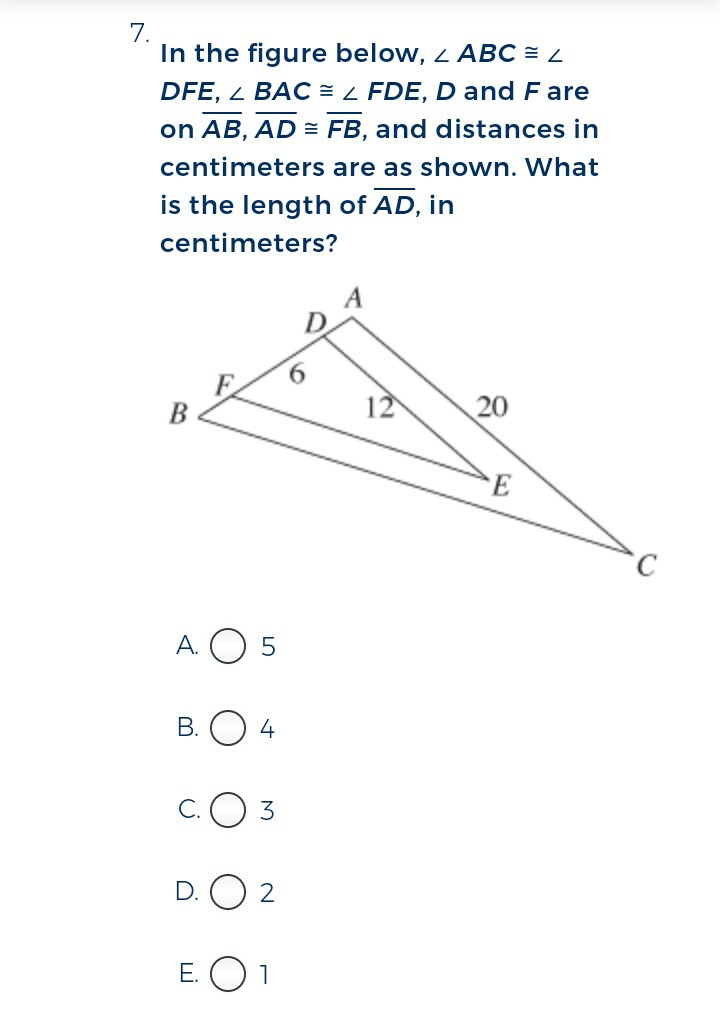
Question and Answers Forum
AllQuestion and Answers: Page 1845


Pg 1840 Pg 1841 Pg 1842 Pg 1843 Pg 1844 Pg 1845 Pg 1846 Pg 1847 Pg 1848 Pg 1849
|
Question and Answers Forum |
AllQuestion and Answers: Page 1845 |
| Prove that if z = cos 6° + i sin 6°, then (1/(z^2 + 1)) − ((iz)/(z^4 − 1)) + ((iz^3 )/(z^8 − 1)) + ((iz^7 )/(z^(16) − 1)) = 0. |
| If α = cos ((2π)/5) + i sin ((2π)/5) , then find the value of α + α^2 + α^3 + α^4 . |
| If (((1 + i(√3))/(1 − i(√3))))^n is an integer, then n is |
| (((√(5 + 12i)) + (√(5 − 12i)))/((√(5 + 12i)) − (√(5 − 12i)))) = |
| sin z=200 find z |
| PS is a line segment of length 4 and O is the midpoint of PS. A semicircular arc is drawn with PS as diameter. Let X be the midpoint of this arc. Q and R are points on the arc PXS such that QR is parallel to PS and the semicircular arc drawn with QR as diameter is tangent to PS. What is the area of the region QXROQ bounded by the two semicircular arcs? |
| How many integer pairs (x, y) satisfy x^2 + 4y^2 − 2xy − 2x − 4y − 8 = 0? |
| What is the sum of the squares of the roots of the equation x^2 − 7[x] + 5 = 0? (Here [x] denotes the greatest integer less than or equal to x. For example [3.4] = 3 and [−2.3] = −3.) |
| Let P(n) = (n + 1)(n + 3)(n + 5)(n + 7)(n + 9). What is the largest integer that is a divisor of P(n) for all positive even integers n? |
| prove that ∫tan^2 xdx =tan x−x |

|
| Three tennis players A, B and C play each other only once. The probability that A will beat B is (3/5), that B will beat C is (2/3), and that A will beat C is (5/7). Find (1) the probability that A will not win both games (2) the probability that A will win not both games. |
| Find center and radius of circle having equation zz^ + (1 − i)z + (1 + i)z^ − 1 = 0. |

|
| What is the digital root of 3^(2017) |
| related to Q.19333 the side lengthes of a triangle are integer. if the perimeter of the triangle is 100, how many different triangles exist? what is the maximum area of them? |
| tan^2 β=−1 find β.... lets solve for fun |
| If log_2 (9^(x−1) +7)−log_2 (3^(x−1) +1)=2, then the values of x are |
| If α, β, γ and δ are four solutions of the equation tan (θ + ((5π)/4)) = 3 tan 3θ, then (1) Σtan α = 0 (2) Σtan α tan β = −2 (3) Σtan α tan β tan γ = −(8/3) (4) tan α tan β tan γ tan δ = −3 |
| The block Q moves to the right with a constant velocity v_0 as shown in figure. The relative velocity of body P with respect to Q is (assume all pulleys and strings are ideal) |
| In the arrangement shown in figure two beads slide along a smooth horizontal rod. The relation between v and v_0 in given position will be |
| Two blocks are placed on a smooth horizontal surface and connected by a string pulley arrangement as shown. If a force F starts acting on block m_1 , then find the relation between acceleration of both masses and their values |
| Prove that ∣z_1 − z_2 ∣^2 = ∣z_1 ∣^2 + ∣z_2 ∣^2 − 2∣z_1 ∣ ∣z_2 ∣ cos (θ_1 − θ_2 ) |
| Prove that ∣z_1 + z_2 ∣^2 = ∣z_1 ∣^2 + ∣z_2 ∣^2 ⇔ (z_1 /z_2 ) is purely imaginary number. |
| Prove that ∣z_1 + z_2 ∣ = ∣z_1 − z_2 ∣ ⇔ arg(z_1 ) − arg(z_2 ) = (π/2) |
| Prove that ∣z_1 + z_2 + z_3 + .... + z_n ∣ ≤ ∣z_1 ∣ + ∣z_2 ∣ + ∣z_3 ∣ + .... + ∣z_n ∣ |
Pg 1840 Pg 1841 Pg 1842 Pg 1843 Pg 1844 Pg 1845 Pg 1846 Pg 1847 Pg 1848 Pg 1849 |